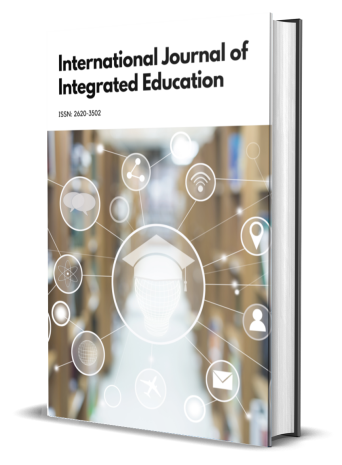Due to intolerance of dental materials used for therapeutic treatment
Abstract
Long-term clinical observations show that widely used dentures made of metals and their alloys are not indifferent, cause a number of diseases of the oral mucosa, and have social and medical consequences in the form of intolerance to dental prosthesis materials[1,2]. Currently, ceramic materials, plastics, stainless steels, cobalt-chromium, silver-palladium alloys, gold-based alloys, platinum, etc. are used for orthopedic treatment. these alloys include the following metals: iron, chromium, Nickel, titanium, manganese, silicon, molybdenum, cobalt, palladium, zinc, silver, gold, etc. Signs of intolerance may occur when placing dentures and filling materials in the oral cavity. Intolerance to prosthetic materials can be caused by different reasons that have different mechanisms of pathology development. Solving problems with intolerance to dental materials in each patient requires analysis together with a dentist, an immunologist, and an immunological laboratory [1-4].
References
V abadjyan. n. Changes in microcirculation parameters of the prosthetic bed mucosa after prosthetics with removable prostheses // Methods for studying regional blood circulation and microcirculation in the clinic.- Saint Petersburg, 2003. - P. 113-114.
Arutyunov S. D. and Lebedenko. Yu. Maksimovsky Yu. M. Galvanic processes in stamatology. 2012-172c.
Arutyunyan A.V., Vanyan N. G. On the study of galvanism in the oral cavity // Bulletin of dentistry, Yerevan, 2007, Vol. 4, no. 2. - p. 56-57.
Bazhanov N. N., V Kozlov.A., T Robustova.G., Maksimovsky Yu. M. State and prospects of prevention and treatment of purulent-inflammatory diseases of the maxillofacial region // Dentistry, 1997, 2. - gr. 15-19,
Banchenko G. V. Fleischer G. M. et al. Eletromagnetic Allergy galvanosis medical alphabet / / dentistry, 2/2012. - P. 42-51.
Benkovskaya S. G., Rastorguev B. T. Comparative evaluation of periodontal tissues in patients with metal and cermet prostheses // New in dentistry, 1996; 3. - gr. 21-22.
Budypina S. M., Dechtyarev V. P. Physiology of the maxillofacial region / / Moscow, Meditsina, 2001. - 350S.
Byakova Zh. s. Assessment of regional blood flow when using dental prostheses // Nizhegor. Med. Zhurn., 2003. - pp. 164-165.
Vanyan N. G., Tatintsyan L. V., Yesayan L. K., Shaginyan A. G., Avetisyan A. A. Influence of non-removable metal prostheses in the oral cavity on the state of teeth and periodontal tissues // Medicine, science and education, Yerevan 2009/2, pp. 78-81.
Vanyan N. G. Results of studies of the state of the oral cavity in patients who wear bridges for a long time // Bulletin of dentistry, Yerevan, 2011, Vol. 8, no. 3. - p. 6-8.
Volozhin A. I. Allergy and other types of intolerance in dentistry, etiology, pathogenesis, principles of treatment / / method. a manual for students of Stom.faculty. M. MMSI, 1994. - p. 89.
Volyntsev V. M. Clinical and laboratory indicators of intolerance to metal alloys // Abstract. Diss. candidate of medical Sciences. Kiev, 1996. - p. 17.
Gozhy A. G. Clinical manifestations of electrochemical processes caused by finishing treatment of stainless steel dentures/ A. G. Gozhy, G. R. Sagatelyan, L. D. Gozhaya // Dentistry. - 1998. - N3. - P. 46-50.
Razhabov O. A. Clinical changes in the oral cavity when using metal-ceramic dentures/ / Zh.Tibetaanse kun 1(29)2020 p. 322-325.
Zufarov A. S., Israilov, I. H., X Rakhmanov.Sh. Morphological evaluation of prosthetic bed after orthopedic intervention by low-intensity laser radiation // Proc.scientific.Tr. Kazan, 1995.- KN.1.-gr.134-136.
Kapitonova Yu. M. Treatment of secondary adentia with bridge-like prostheses / / author's thesis of the candidate of medical Sciences, Moscow, 2002.
Knyazeva M. B. Preparation of teeth and periodontium for the use of metal-ceramic prostheses // Abstract. dis. Cand. med. Sciences.
Kozlov V. I., Gurova O. A., Azizov G. A. and others. Laser Doppler Doppler flowmetry in assessing the state of blood microcirculation / / methods for studying regional blood circulation and microcirculation in the clinic. Saint Petersburg, 2004, pp. 71-72.
Kolesova T. V. Analysis of the results of orthopedic treatment with solid-cast metal-ceramic dentures / / author's abstract of the Cand. med. sci. Volgograd, 1999. - p. 294.
raigrodski AJ. Modern materials and technologies for all-ceramic fixed partial dentures: literature review / / J Prosthet Dent 2004; 92. - Pp. 557-62.
Radzhabov O. A. clinical and functional changes in the oral cavity when using metal-ceramic dental prostheses/ / South Asian academic scientific journals Volume 10 issue 2, February 2020g. 209-215.
Schillinburg H., Jacobi R., Brackett 5. Fundamentals of dental preparation for cast metal and porcelain restorations / / Quintessence Publishing Co. Chicago-London-Berlin-Sao Paulo-Tokyo and Hong Kong Sec Print 1991. - p. 390.
Sorensen J. Lava system for CAD / / Cam production of high-strength precision fixed dentures. quintessence dent technol 2003; 26:57-67.
In submitting the manuscript to the International Journal on Integrated Education (IJIE), the authors certify that:
- They are authorized by their co-authors to enter into these arrangements.
- The work described has not been formally published before, except in the form of an abstract or as part of a published lecture, review, thesis, or overlay journal.
- That it is not under consideration for publication elsewhere,
- The publication has been approved by the author(s) and by responsible authorities – tacitly or explicitly – of the institutes where the work has been carried out.
- They secure the right to reproduce any material that has already been published or copyrighted elsewhere.
- They agree to the following license and copyright agreement.
License and Copyright Agreement
Authors who publish with International Journal on Integrated Education (IJIE) agree to the following terms:
Authors retain copyright and grant the International Journal on Integrated Education (IJIE) right of first publication with the work simultaneously licensed under Creative Commons Attribution License (CC BY 4.0) that allows others to share the work with an acknowledgment of the work's authorship and initial publication in this journal.






1.png)
